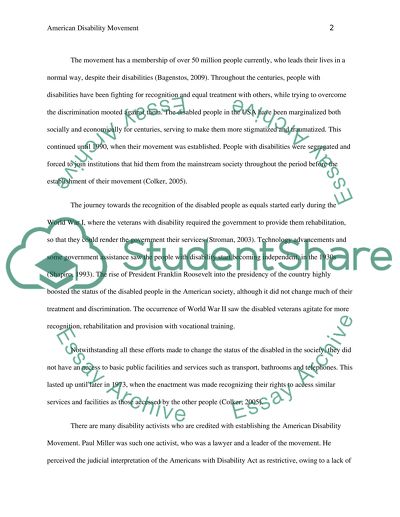Cite this document
(“American Disability Movement Research Paper Example | Topics and Well Written Essays - 2500 words”, n.d.)
Retrieved from https://studentshare.org/sociology/1396719-american-disability-movement
Retrieved from https://studentshare.org/sociology/1396719-american-disability-movement
(American Disability Movement Research Paper Example | Topics and Well Written Essays - 2500 Words)
https://studentshare.org/sociology/1396719-american-disability-movement.
https://studentshare.org/sociology/1396719-american-disability-movement.
“American Disability Movement Research Paper Example | Topics and Well Written Essays - 2500 Words”, n.d. https://studentshare.org/sociology/1396719-american-disability-movement.


